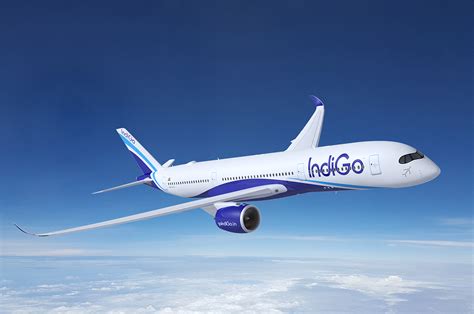The world is waiting for the aerospace industry to provide guidance on the next generation turboprops. This is a small, even niche market, but it’s seen a resurgence as mainline airplanes grow in size. The regional jetliners that once dominated the 50-100 seat space have becoming economically-challenged as fuel costs shot up. The ATR-72 and Bombardier Q400 have proved to be increasingly popular alternatives to 70-seat jets. Although Mitsubishi launched the 70- and 90-seat MRJ, the smaller model has proved a difficult sell. Even the popularity of the 90-seat regional jet seems to be waning.
An interesting example of the impact of turboprops is seen at India-based SpiceJet. The airline operates in an environment which is very challenging. Internal India flights by jet airplanes incur onerous fuel taxation charges. The same airplane flying out of India does not attract these taxes. Airfares are not at levels that allow India’s airlines to make profits. There is also the ever-meddlesome India government forever trying to save state owned Air India. SpiceJet did something counter-intuitive. CEO Neil Mills spoke at the Terrapinn Low Cost Carrier Conference in Singapore last week and explained that they decided to add complexity by bringing in an extra aircraft. The airline had been flying Boeing 737-800s and added Q400s. The Q400s do not attract high fuel taxes and have proven themselves adept at providing service at many Indian airports too small to handle jets. Moreover, the Q400s have the range to fly some routes beyond India’s borders. SpiceJet’s finances have improved markedly.
The case favoring turboprops is also bolstered by ongoing high fuel costs outside India. Bombardier has seen sales success of its Q400s of late as airlines realize the benefit of high speed turboprops. Our research indicates that network airlines are especially attracted to the Q400 performance. Non-network airlines are attracted to the competitive pricing of ATR turboprops.
The Next Generation Turboprop
ATR has been talking about a 90-seat Next Generation Turboprop (NGT) for some time. The idea is to extend the current design and add much more powerful engines and updated systems. ATR has spoken of using a 5,000+ SHP engine from GE (GE38-1B as used on the Sikorsky CH-53K has 7,500 SHP), but Pratt & Whitney will also likely bid on this design. Below is a rendering of what the future ATR might look like.
The NGTs are likely to make extensive use of the flight deck technologies seen on pure jets such as Required Navigation Performance. ATR, as part of the EDS family, will almost certainly have the Airbus ProSky company Quovadis’ RNP package. The RNP system allows aircraft to fly precisely along a predefined route using on-board navigation systems and the GPS-based global navigation satellite system. Clearly this system helps reduce fuel burn and flying time – which is already an advantage for a turboprop over a jet. Since turboprops spend most of their time on shorter flights (~500 miles) time saved adds fast because of the many turns they do each day.
The next generation ATR will force Bombardier to react with its own updated airplane. Its Q400 is already called “next gen” in the company’s marketing information. But an ATR looking like the rendering above would require a significant response from Bombardier beyond its current offering.
At last year’s ISTAT conference, both OEMs publicly stated they could not make the economics of a 90-seat turboprop work. Here we are, nearly a year later, and ATR is pushing the idea. By deploying new materials and systems, ATR might have reached a tipping point where they can make the new, larger, turboprop work. If that is the case the competitive pressures ramp up not only for Bombardier but also for the various other turboprop programs being evaluated in South Korea and India.
Views: 11





“Our research indicates that network airlines are especially attracted to the Q400 performance. Non-network airlines are attracted to the competitive pricing of ATR turboprops.”
Very interesting point.
It’s fascinating to observe how initially the new regional jets were going to make the turboprops obsolete. Now the trend has completely reversed itself. It is the very existence of the regional jet that is now threatened! And as you have noticed there is only one reason for that: oil price.
“ATR has been talking about a 90-seat Next Generation Turboprop (NGT) for some time.”
That’s a very interesting proposition. I can’t wait to see how Bombardier will respond to the NGT challenge. To me it appears that ATR is now in the driving seat.
Not a word about Embraer. Do you think it could make a TP come back?
I actually wonder why ATR did not launch the 92 or however you call that 2 or 3 years ago. Bombardier is buzy with the C series. The 72-600 is in full production. The plane would then be ready when the economy is running better. There would have been no better timing.
Great point Chris. In this industry time is everything.
Had the A380 been on time Airbus might have sold many more by now. Had the 787 been on time Boeing would be swimming in money. Had Bombardier been on time with the CSeries, Embraer would be much further behind. And if the F-35 was on time, well you get the idea.
It goes as it always was.
If this ATR 90 seater is the base version, most likely a bigger version will be launched at the same moment, cutting into BBD, ATR and even NB territory. No doubt it will be faster then the ATR-72s.
The Q400 has no luggage/ cargo belly so everything must be carried in the narrow cabin. Not an operational advantage. Something BBD needs to adress.
However BBD and Embraer seem busy fighting each other so ATR might very well overrun the 70-100 seat short haul segment at the end of this decade.
With all the talk of the turboprop making a comeback, where are the orders from the US carriers?.The ATR is selling quite well in Europe and a few Q400 frames are going out the door, but the forecasted flood of turboprops is not happening.
AA and DL have plans for larger regional jets to enter the fleet, bit no turboprops. The public still takes a dim view of any aircraft with propellers as they associate them with a throw back to the 50’s.
US Piedmont divisions fleet of dash-8’s has been shrinking and while they say they are looking for more aircraft, nothing to date. ATR also a few years ago made a demo call at SBY to give Piedmont brass a close up look. No sale.
Even with the fuel savings, I think the airlines are looking to exit the very small markets where the runways are less than 5000 feet. Keeping a small sub fleet to service very small markets is not cost effective. Problem is that many small stations cannot fill a 70 seat plane
The 30 seat turboprop is dead and time will tell if the larger models can make inroads in the US market.
Extremely interesting article and comments. In emerging markets or even in mature ones, while conventional wisdom provide pointers towards the use of turboprops on less then 500mile segments, it is unclear whether they have been responsible for making good profits during times the economy is doing well. On the other hand, they may have been good at ensuring that too much money is not lost during bad times. Prices tend to be inelastic on these routes. With the Geared Turbo Fan and the GE LeapX around the corner, powering the A320 neo and Boeing 737, many of them operating on less than 500 mile routes, it would interesting to see the battle between the props and these fuel efficient narrow-bodies. The narrow-bodies would probably do well especially if load factors are good. Wonder if there is information on what will happen to this competition ?